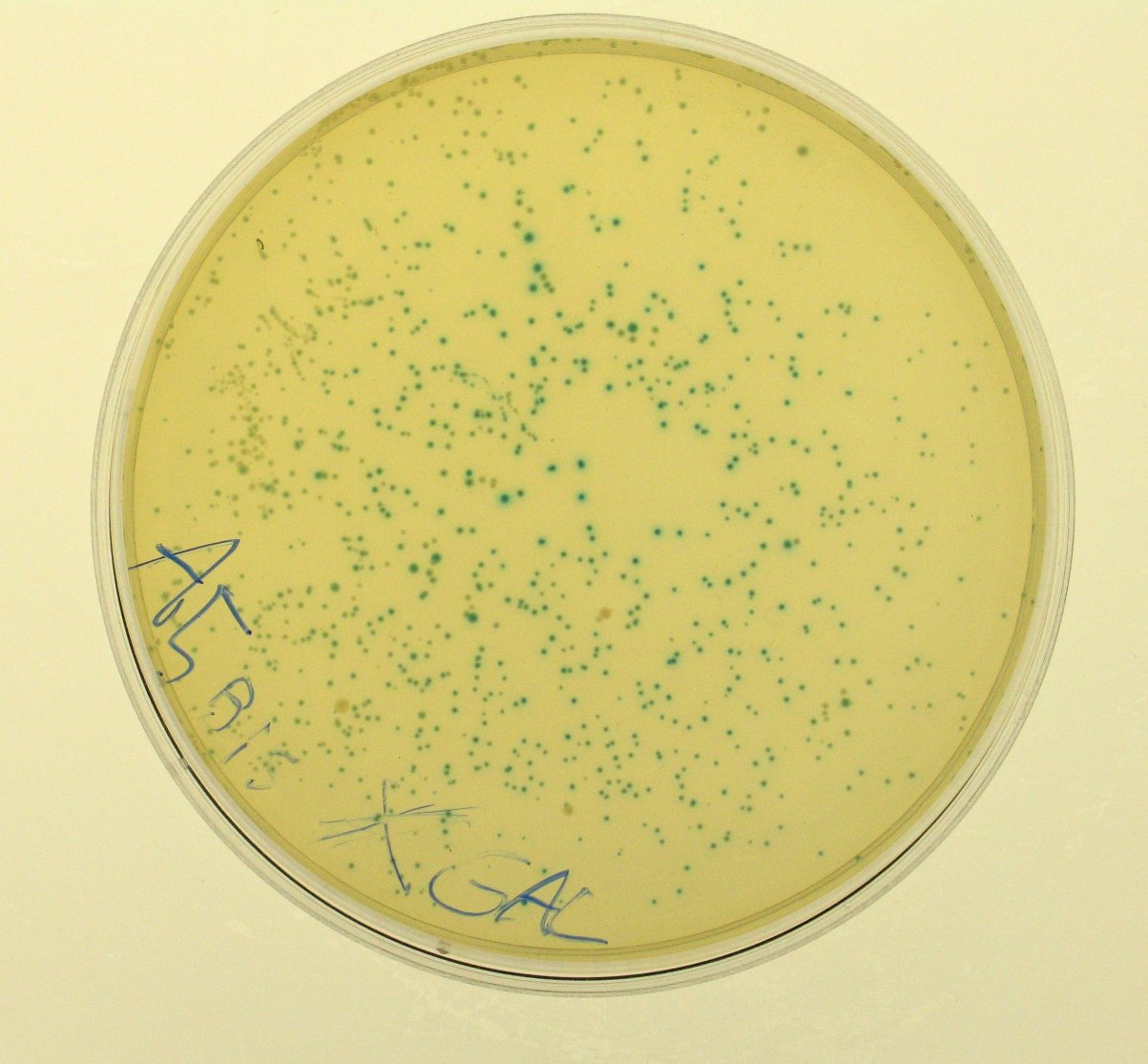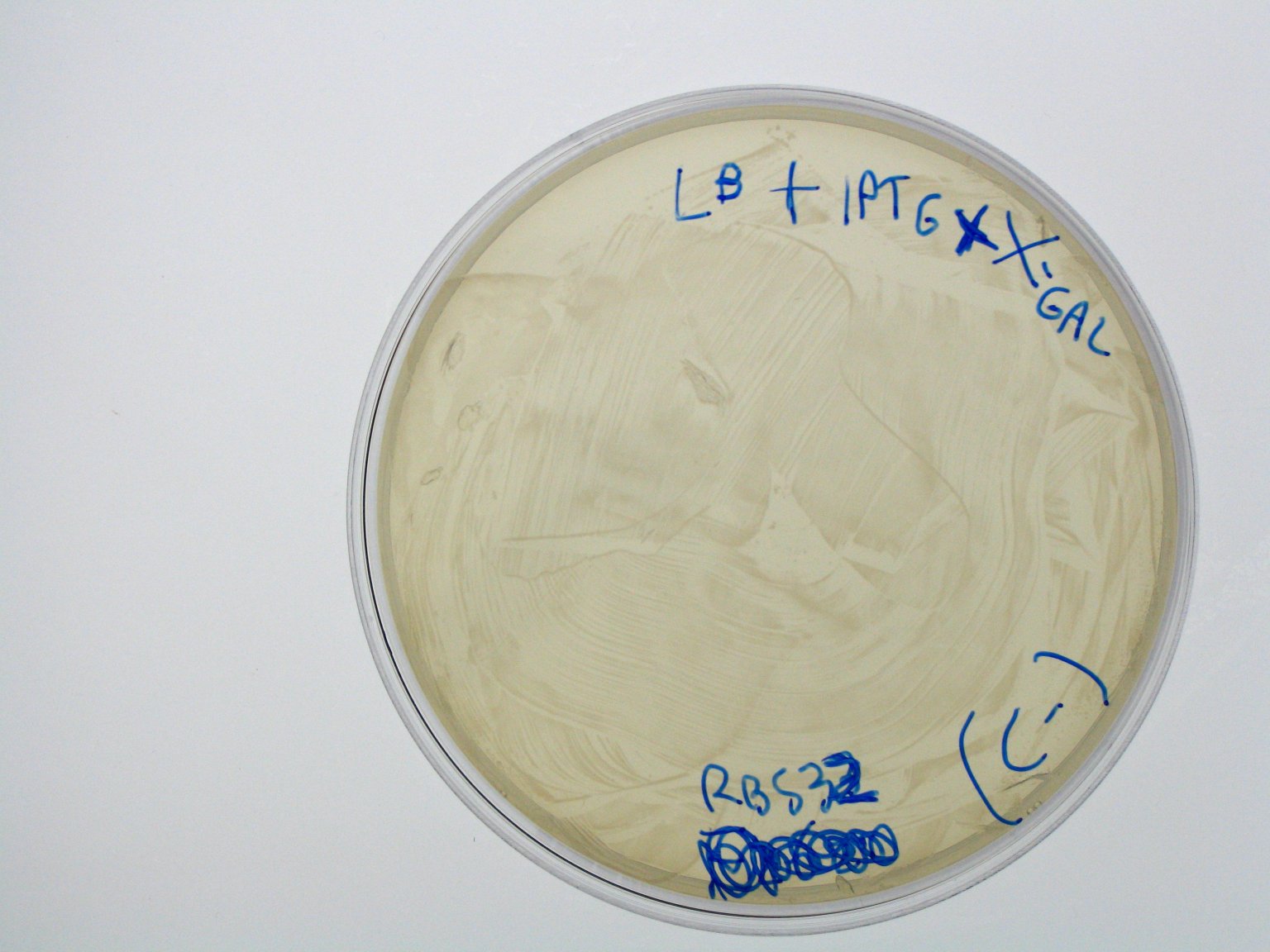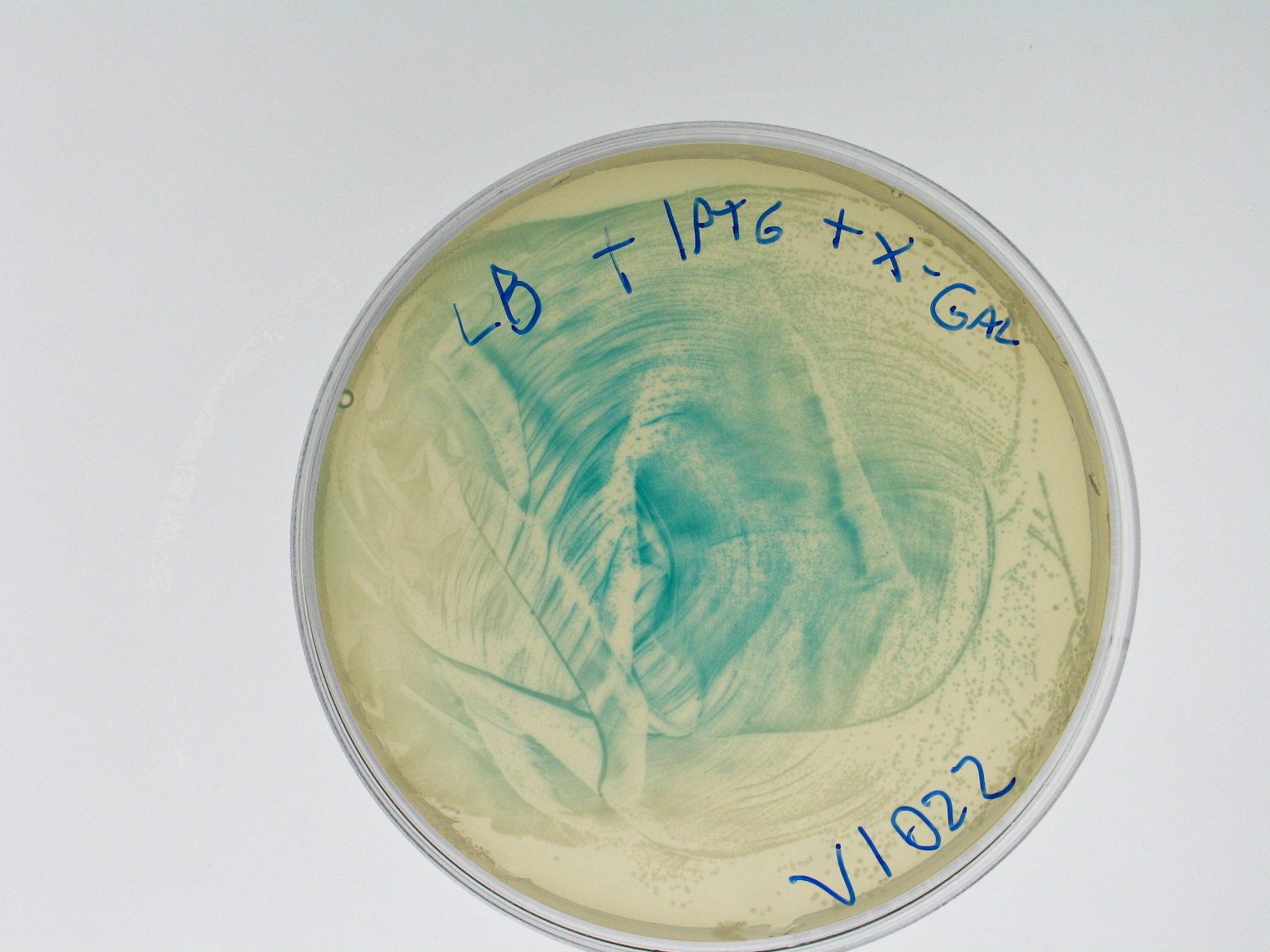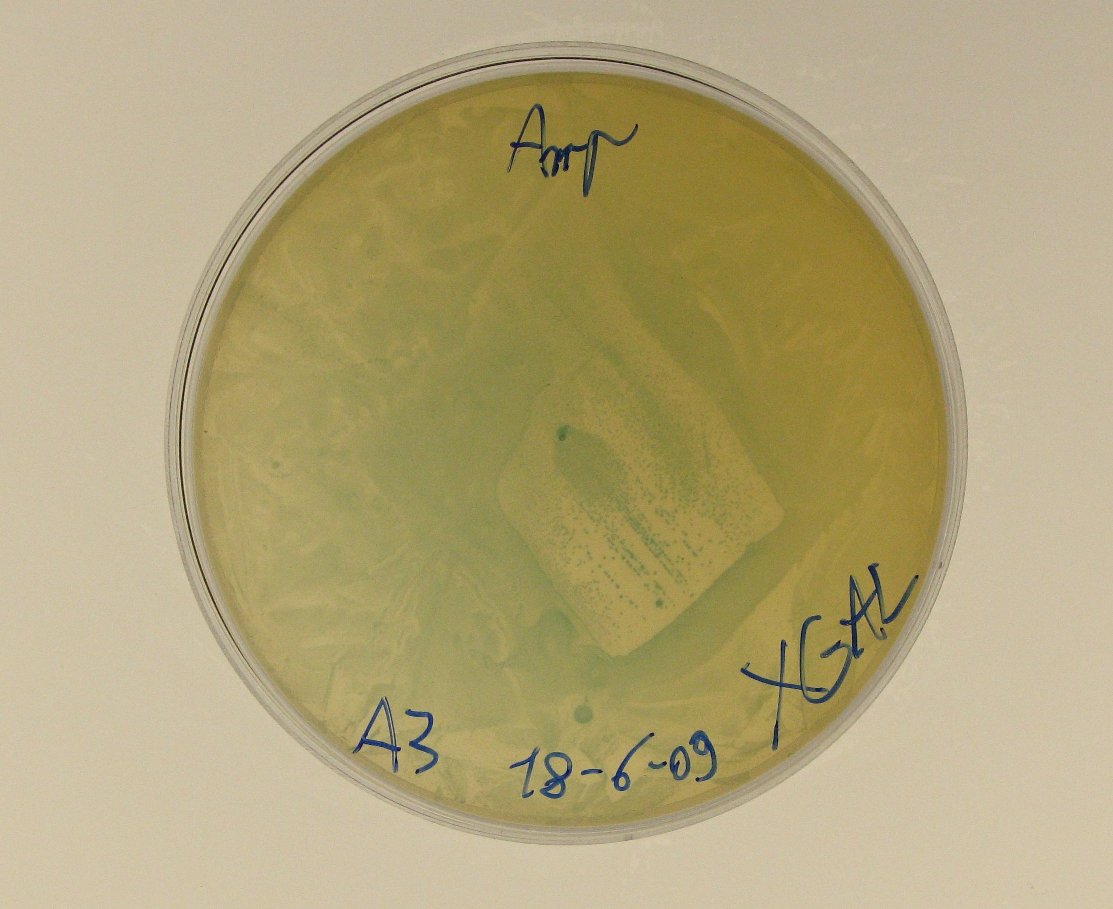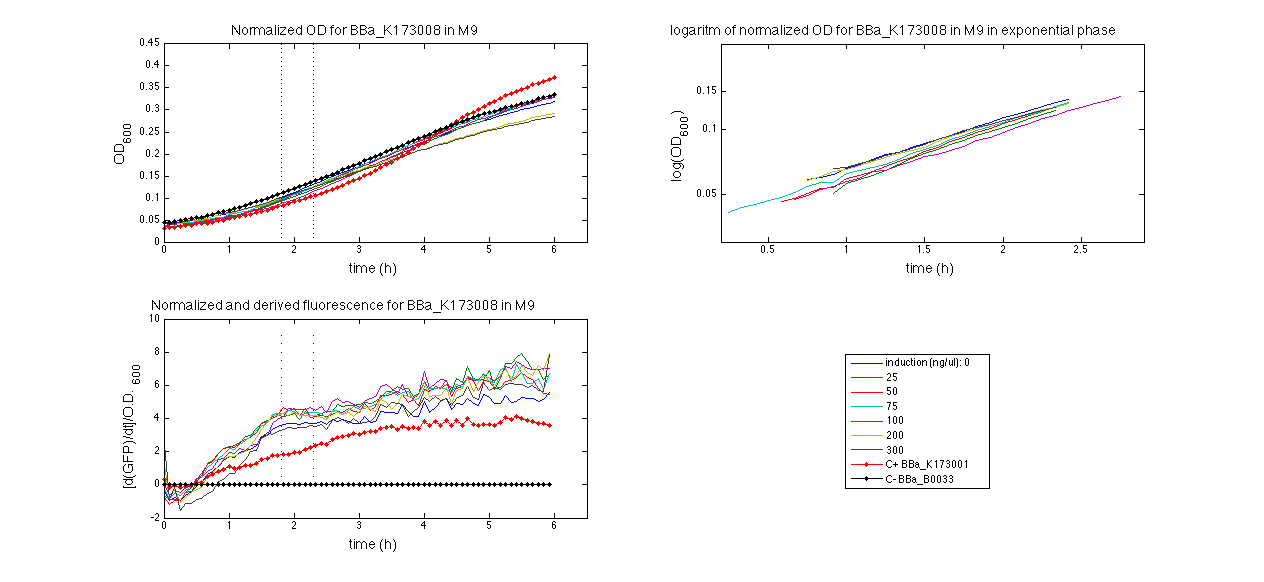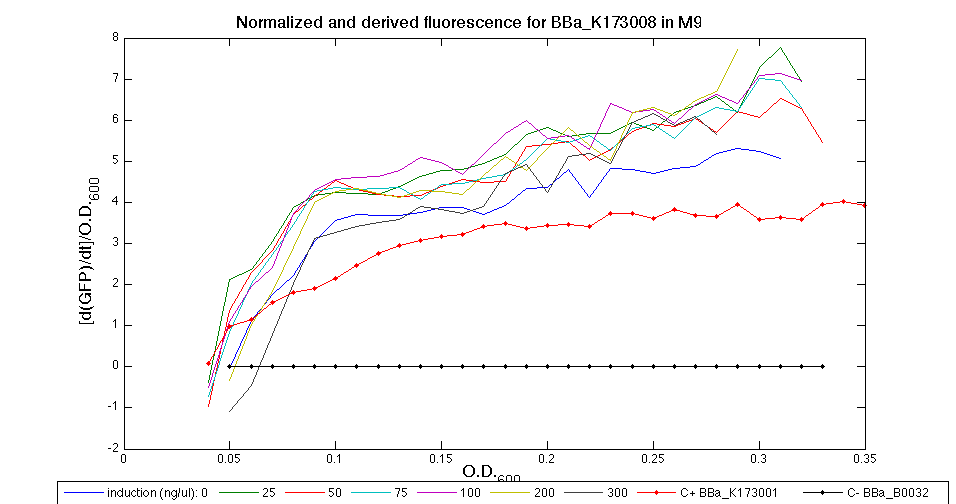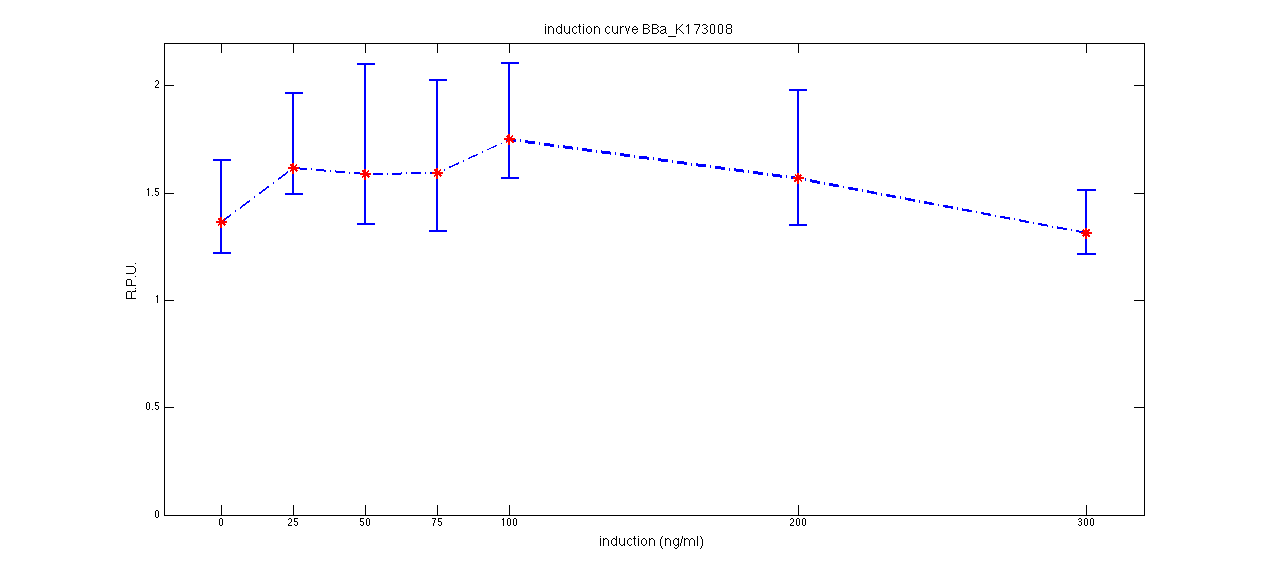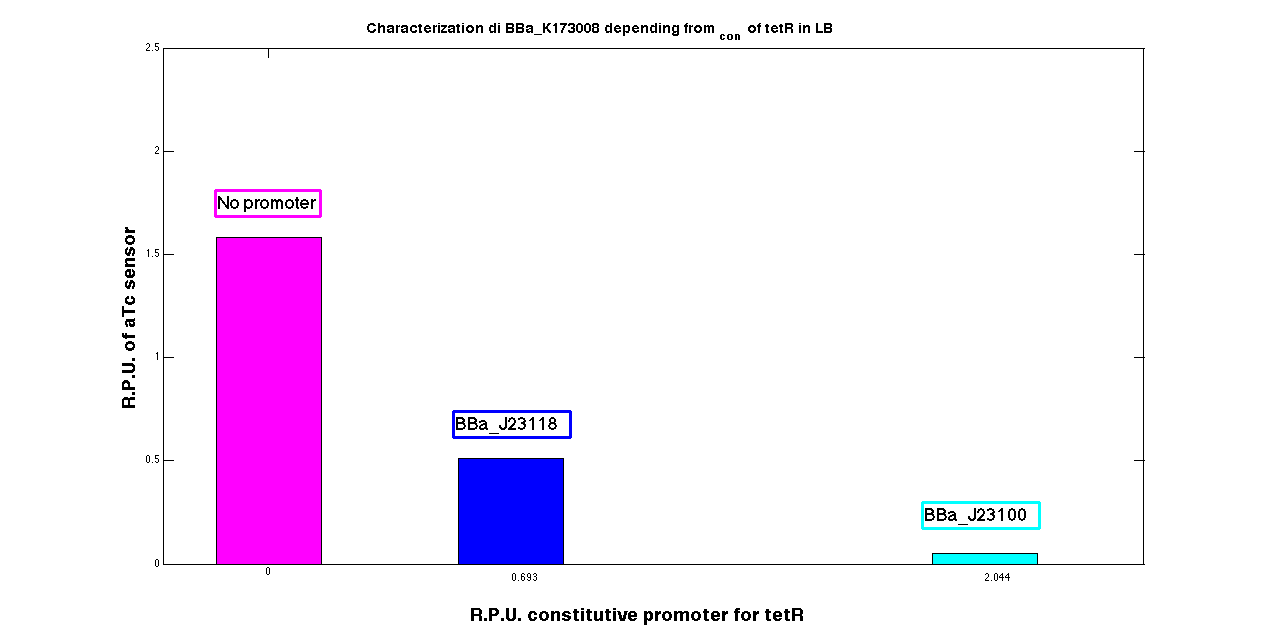Team:UNIPV-Pavia/Rebuilt
From 2009.igem.org
(→Characterization) |
|||
| (11 intermediate revisions not shown) | |||
| Line 31: | Line 31: | ||
*[[Team:UNIPV-Pavia/Rebuilt#BBa_K173005/BBa_Q04400 - tetR QPI| BBa_K173005/BBa_Q04400 - tetR QPI]] | *[[Team:UNIPV-Pavia/Rebuilt#BBa_K173005/BBa_Q04400 - tetR QPI| BBa_K173005/BBa_Q04400 - tetR QPI]] | ||
| - | [[Team:UNIPV-Pavia/Existing | + | [[Team:UNIPV-Pavia/Existing| '''Existing parts from the Registry''']] |
| - | [[Team:UNIPV-Pavia/Debug | + | [[Team:UNIPV-Pavia/Debug| '''Existing parts: sequence debugging''']] |
__NOTOC__ | __NOTOC__ | ||
| Line 69: | Line 69: | ||
We improved the existing <partinfo>BBa_I732019</partinfo> part building up <partinfo>BBa_K173004</partinfo> and testing its activity. This new part has been submitted to the Registry, as well as its physical DNA, allowing future users to assemble this beta-gal protein generator in their own project. | We improved the existing <partinfo>BBa_I732019</partinfo> part building up <partinfo>BBa_K173004</partinfo> and testing its activity. This new part has been submitted to the Registry, as well as its physical DNA, allowing future users to assemble this beta-gal protein generator in their own project. | ||
| - | This part has shown to work as expected when a PoPS input is given, being able to cleave X-Gal on LB agar plates. In our case, we have tested this part with <partinfo>BBa_K173005</partinfo> upstream, which provides a promoter strength of | + | This part has shown to work as expected when a PoPS input is given, being able to cleave X-Gal on LB agar plates. In our case, we have tested this part with <partinfo>BBa_K173005</partinfo> upstream, which provides a promoter strength of 1.58 [1.56 ; 1.67] RPU in LB medium. <partinfo>BBa_K173005</partinfo> can be considered as a measurement system for <partinfo>BBa_K173004</partinfo>. It has been tested in pSB1AK3 vector. |
Surprisingly, as reported in the 4th picture, in the plate with the promoterless protein generator blue colour can be seen. It may be due to i) spurious transcription of the protein generator in the high copy number plasmid pSB1AK3 or ii) to the recombination occurred between plasmidic lacZ and genomic lacZdeltaM15, in which the working lacZ was integrated in E. coli genome under the control of lac promoter. This phenomenon has still to be studied. Caltech iGEM 2008 team reported this phenomenon in a similar protein generator, in which beta-gal assay was performed. | Surprisingly, as reported in the 4th picture, in the plate with the promoterless protein generator blue colour can be seen. It may be due to i) spurious transcription of the protein generator in the high copy number plasmid pSB1AK3 or ii) to the recombination occurred between plasmidic lacZ and genomic lacZdeltaM15, in which the working lacZ was integrated in E. coli genome under the control of lac promoter. This phenomenon has still to be studied. Caltech iGEM 2008 team reported this phenomenon in a similar protein generator, in which beta-gal assay was performed. | ||
| Line 82: | Line 82: | ||
===Description=== | ===Description=== | ||
| - | + | This device takes PoPS as input and gives a PoPS output according to the transfer function of a logic inverter: tetR (BBa_C0040) is a repressor for tetR promoter (BBa_R0040), so high input signals give a low expression of tetR promoter and low input signals give a high expression of the promoter. | |
| - | + | We have characterized <partinfo>BBa_K173005</partinfo> part (twin of <partinfo>BBa_Q04400</partinfo>) as a constitutive device, equivalent to tetR promoter, and as a genetic logic inverter. | |
| - | + | <partinfo>BBa_K173005</partinfo> has been studied as constitutive device using <partinfo>BBa_K173008</partinfo>, which has been induced with different aTc concentrations in order to see if GFP levels changed as a function of aTc concentration. | |
| - | + | On the other hand, <partinfo>BBa_K173005</partinfo> has been studied as a logic inverter by using <partinfo>BBa_K173008</partinfo>, <partinfo>BBa_K173009</partinfo> and <partinfo>BBa_K173026</partinfo>, in which tetR expression is driven by constitutive promoters of different and measured strengths (no promoter, <partinfo>BBa_J23100</partinfo> and <partinfo>BBa_J23118</partinfo> respectively). | |
| - | + | ||
[[Image:pv_A4_description.png]] | [[Image:pv_A4_description.png]] | ||
| Line 93: | Line 92: | ||
| - | This part has been | + | This part has been characterized only in M9 supplemented medium. In LB only a measure in absence of inducer has been performed. |
<html> | <html> | ||
<table border=1 align="center" cellpadding=5px> | <table border=1 align="center" cellpadding=5px> | ||
| Line 147: | Line 146: | ||
|[[Image:PV_A8_M9.png|700px|thumb|<partinfo>BBa_K173008</partinfo> Growth curves for BBa_K173008 in M9]] | |[[Image:PV_A8_M9.png|700px|thumb|<partinfo>BBa_K173008</partinfo> Growth curves for BBa_K173008 in M9]] | ||
|- | |- | ||
| - | |[[Image:PV_A4_Scell_M9.png|700px|thumb|<partinfo>BBa_K173008</partinfo>(dGFP/dt)/ | + | |[[Image:PV_A4_Scell_M9.png|700px|thumb|<partinfo>BBa_K173008</partinfo>(dGFP/dt)/O.D. in M9]] |
|- | |- | ||
|[[Image:PV_A4_IndCurvM9.png|700px|thumb|<partinfo>BBa_K173008</partinfo> Induction curve of BBa_K173008 in M9]] | |[[Image:PV_A4_IndCurvM9.png|700px|thumb|<partinfo>BBa_K173008</partinfo> Induction curve of BBa_K173008 in M9]] | ||
| Line 154: | Line 153: | ||
|} | |} | ||
| - | The last image reports the inverter behaviour of tetR QPI component in LB medium. Considering RPU of promoter | + | The last image reports the inverter behaviour of tetR QPI component in LB medium. Considering RPU of promoter regulating tetR expression as input and RPU of tetR QPI device as output it is possible to characterize the logic inverter reported in figure. NB: RPU of promoters <partinfo>BBa_J23100</partinfo> and <partinfo>BBa_J23118</partinfo> have been calculated as reported in the [[Team:UNIPV-Pavia/Existing#BBa_J23100.2C_BBa_J23101.2C_BBa_J23118_-_constitutive_promoter_family_members| dedicated section]], while the absence of promoter has been associated to RPU=0. When input (RPU of the promoter expressing tetR) is high, the output is low and the behavior is opposite for high input RPU. |
===Conclusions=== | ===Conclusions=== | ||
| + | The expected behaviour of this part was not to be affected by the presence of inducer, because the repressor should not be present. In fact, tetR production isn't regulated by any promoter and Ptet can work as a constitutive one. | ||
| + | |||
| + | Actually, the activity of promoter is not independent from aTc concentration, probably because of spurious transcription of tetR repressor in the high copy number plasmid. The experiments concerning this part have been performed in M9 supplemented medium. In LB medium the component has been tested only in absence of inducer and this has been useful to estimate three points of the transfer function of <partinfo>BBa_K173005</partinfo> as a logic inverter. | ||
| + | |||
| + | We can say that the behaviour of <partinfo>BBa_K173005</partinfo> as a logic inverter has been validated, even if more points of the transfer function have to be measured. | ||
| + | |||
| + | |||
<div align="right"> | <div align="right"> | ||
[[#top|Top]] | [[#top|Top]] | ||
Latest revision as of 19:57, 21 October 2009

|
|
|
Re-built existing parts |
|||||||||||||||||||||||||||||||||||||||||||||||||||
|
Re-built existing parts (BBa_our part code/BBa_existing part code): Existing parts from the Registry Existing parts: sequence debugging
BBa_K173004/BBa_I732019 - beta-galactosidase protein generatorDescriptionThis is a beta-galactosidase protein generator with strong RBS. We built up . It is a twin of , which was classified as "inconsistent" by iGEM HQ in 2008 and so we decided to improve this part submitting a new consistent DNA to the Registry. This part takes PoPS as input to express lacZ gene (), encoding for beta-galactosidase enzyme. This enzyme can be used to cleave lactose molecule to glucose and galactose, but can also be used as a reporter protein for colorimetric assays (together with X-Gal or ONPG as a substrate). X-gal is cleaved by β-galactosidase yielding galactose and 5-bromo-4-chloro-3-hydroxyindole. The latter is then oxidized into 5,5'-dibromo-4,4'-dichloro-indigo, an insoluble blue product. Characterization50 ul of , , (positive control) and were plated on LB + Amp + X-Gal + IPTG plates (except for for which non selective LB was used). Plated bacteria were incubated at 37°C for about 16 hours and then a picture of the plates was taken. To prepare these plates, 20 ul of X-Gal 40 mg/ml in DMF and 20 ul of ready made IPTG were diluted in 60 ul of SOC medium and spread on a LB agar plate. ConclusionsWe improved the existing part building up and testing its activity. This new part has been submitted to the Registry, as well as its physical DNA, allowing future users to assemble this beta-gal protein generator in their own project. This part has shown to work as expected when a PoPS input is given, being able to cleave X-Gal on LB agar plates. In our case, we have tested this part with upstream, which provides a promoter strength of 1.58 [1.56 ; 1.67] RPU in LB medium. can be considered as a measurement system for . It has been tested in pSB1AK3 vector. Surprisingly, as reported in the 4th picture, in the plate with the promoterless protein generator blue colour can be seen. It may be due to i) spurious transcription of the protein generator in the high copy number plasmid pSB1AK3 or ii) to the recombination occurred between plasmidic lacZ and genomic lacZdeltaM15, in which the working lacZ was integrated in E. coli genome under the control of lac promoter. This phenomenon has still to be studied. Caltech iGEM 2008 team reported this phenomenon in a similar protein generator, in which beta-gal assay was performed. Anyway, further comparative tests should be done in order to see if lactose cleavage can be performed faster than in wild type E. coli, after the choice of a suitable promoter which controls this protein generator. BBa_K173005/BBa_Q04400 - tetR QPIDescriptionThis device takes PoPS as input and gives a PoPS output according to the transfer function of a logic inverter: tetR (BBa_C0040) is a repressor for tetR promoter (BBa_R0040), so high input signals give a low expression of tetR promoter and low input signals give a high expression of the promoter. We have characterized part (twin of ) as a constitutive device, equivalent to tetR promoter, and as a genetic logic inverter. has been studied as constitutive device using , which has been induced with different aTc concentrations in order to see if GFP levels changed as a function of aTc concentration. On the other hand, has been studied as a logic inverter by using , and , in which tetR expression is driven by constitutive promoters of different and measured strengths (no promoter, and respectively). CharacterizationThis part has been characterized only in M9 supplemented medium. In LB only a measure in absence of inducer has been performed.
The last image reports the inverter behaviour of tetR QPI component in LB medium. Considering RPU of promoter regulating tetR expression as input and RPU of tetR QPI device as output it is possible to characterize the logic inverter reported in figure. NB: RPU of promoters and have been calculated as reported in the dedicated section, while the absence of promoter has been associated to RPU=0. When input (RPU of the promoter expressing tetR) is high, the output is low and the behavior is opposite for high input RPU. ConclusionsThe expected behaviour of this part was not to be affected by the presence of inducer, because the repressor should not be present. In fact, tetR production isn't regulated by any promoter and Ptet can work as a constitutive one. Actually, the activity of promoter is not independent from aTc concentration, probably because of spurious transcription of tetR repressor in the high copy number plasmid. The experiments concerning this part have been performed in M9 supplemented medium. In LB medium the component has been tested only in absence of inducer and this has been useful to estimate three points of the transfer function of as a logic inverter. We can say that the behaviour of as a logic inverter has been validated, even if more points of the transfer function have to be measured.
|
||||||||||||||||||||||||||||||||||||||||||||||||||||
 "
"

